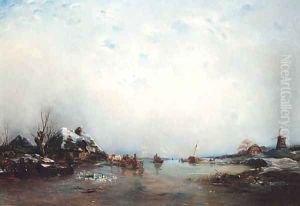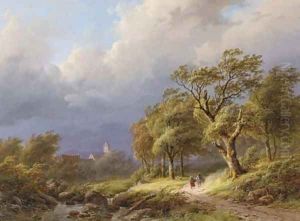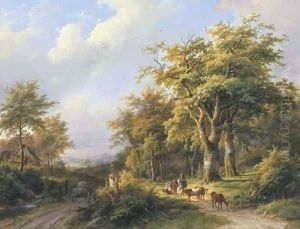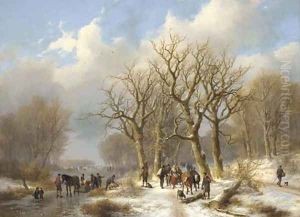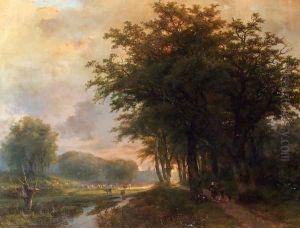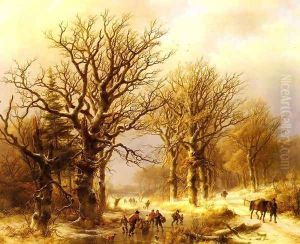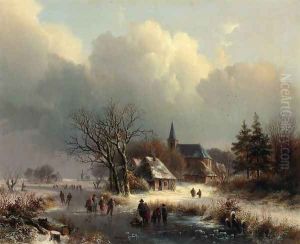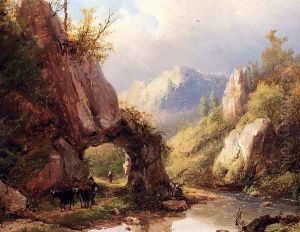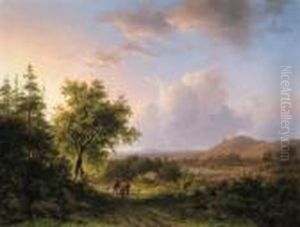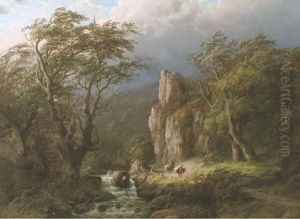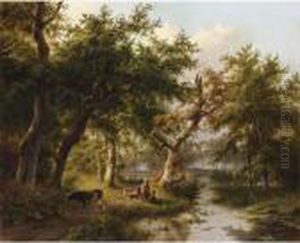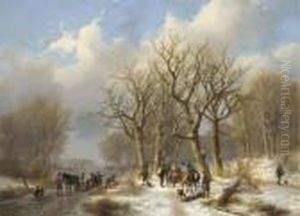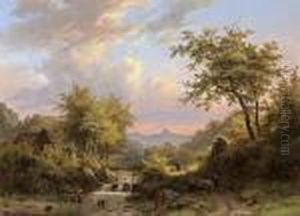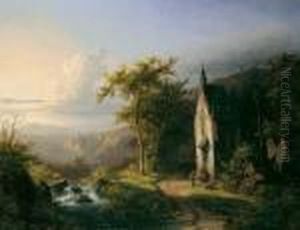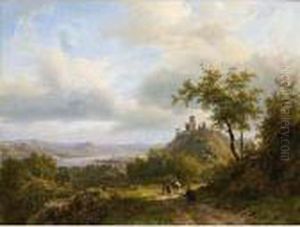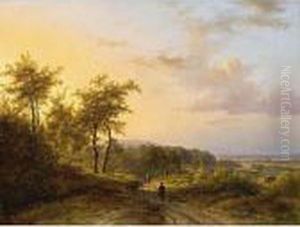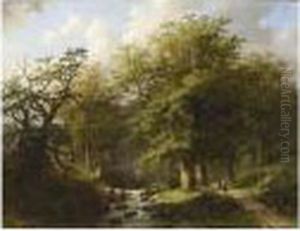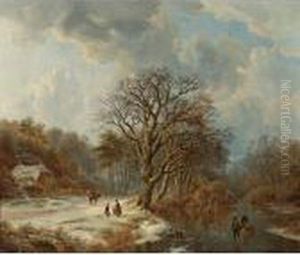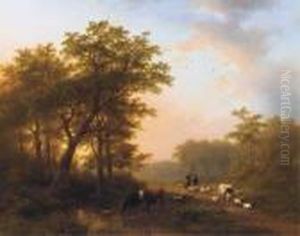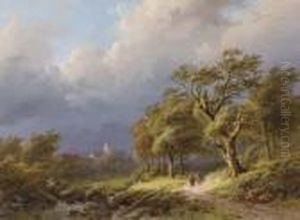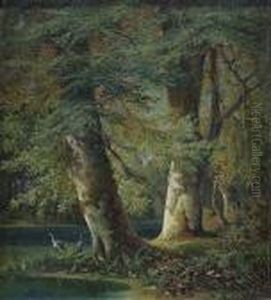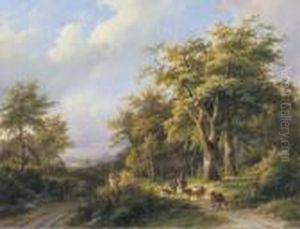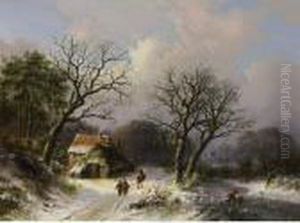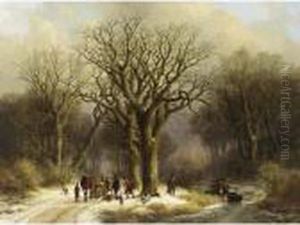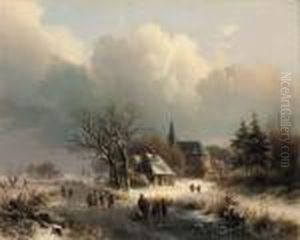Johann Bernard Klombeck Paintings
Johann Bernard Klombeck was a 19th-century German landscape painter, born on November 5, 1815, in Kleve, near the Dutch border. Influenced by the Romantic movement, Klombeck specialized in picturesque landscapes that often depicted the rural countryside of Germany and the Netherlands, with particular attention to the effects of light and atmosphere.
Klombeck initially trained under Barend Cornelis Koekkoek in Kleve, who was a prominent landscape artist of the time. Koekkoek's influence is evident in Klombeck's work, particularly in his meticulous approach to natural details and his compositions' overall serenity. Through his mentor, Klombeck was introduced to the Dutch landscape tradition, which would remain a significant influence throughout his career.
Throughout the 1840s and 1850s, Klombeck's reputation grew, and he began exhibiting his works in various art exhibitions, including those in Amsterdam, The Hague, and Berlin. His paintings typically feature expansive views, often with figures or animals, and are characterized by a harmonious blend of realism and idealized beauty. The landscapes usually showcase a variety of weather conditions, capturing the changing seasons and times of day with a skilled use of color and light.
Klombeck's artwork gained considerable popularity, and he became associated with the Düsseldorf school of painting, a group known for its detailed and highly polished works that often carried an emotional or moral message. Despite this association, Klombeck maintained his individual style and continued to focus on the tranquil and idyllic aspects of nature.
In the latter part of his career, Klombeck experienced a decline in popularity. This was partly due to changes in artistic tastes, as the Romantic landscapes of his era gave way to new movements such as Impressionism and Realism. Nevertheless, he continued to paint and exhibit his work until his later years.
Johann Bernard Klombeck passed away on April 29, 1893, in Kleve. His legacy endures through his contributions to landscape painting, with works that capture the quiet majesty of the natural world. Today, his paintings can be found in various European art collections, serving as a testament to his skill and passion for the Romantic landscape tradition.
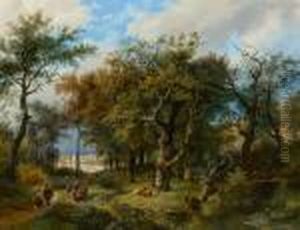
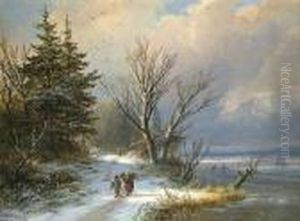
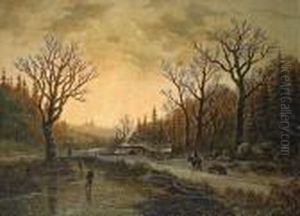
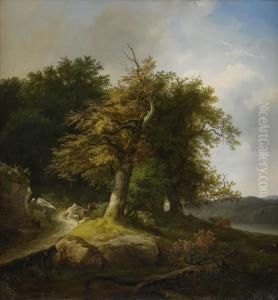
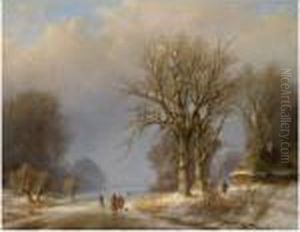
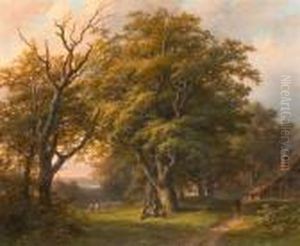
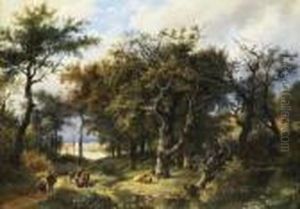
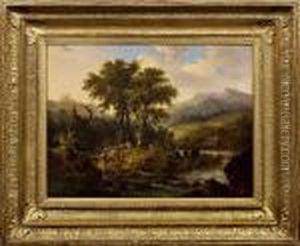
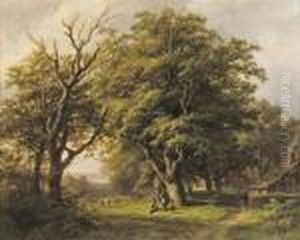
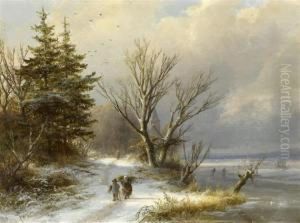
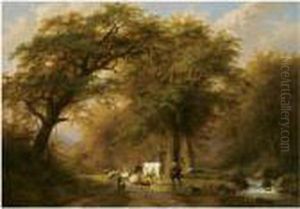
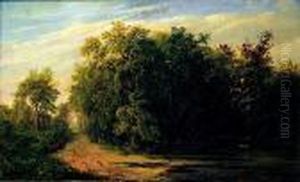
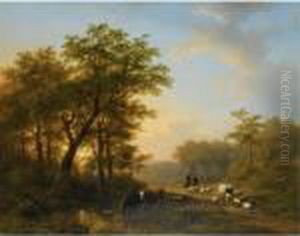
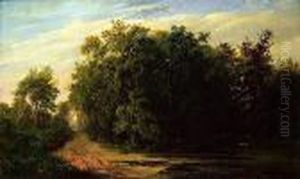
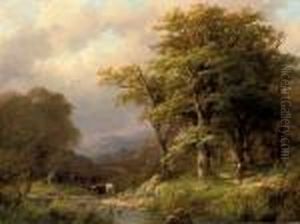
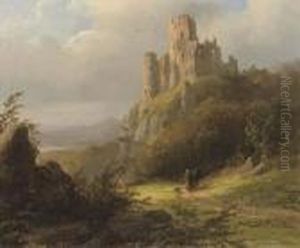
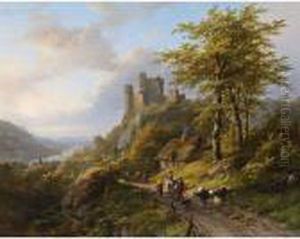
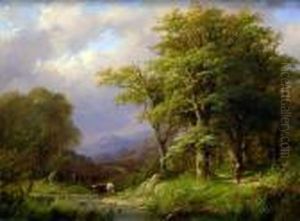
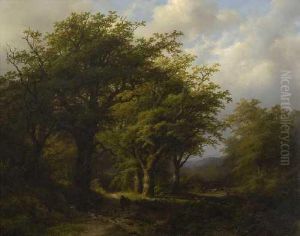
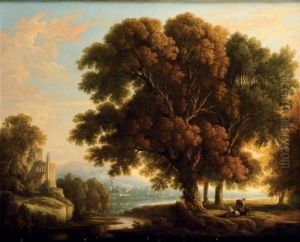
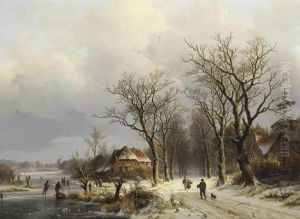
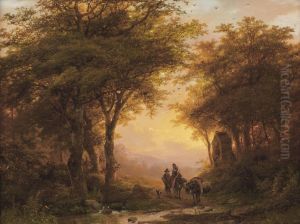
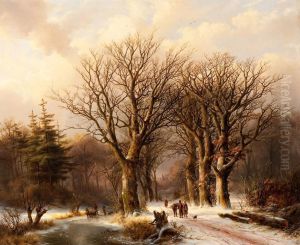
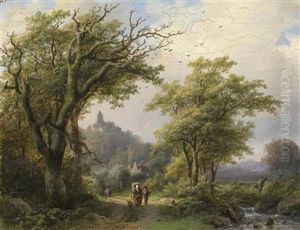
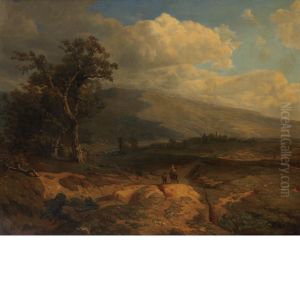
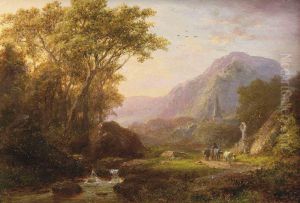
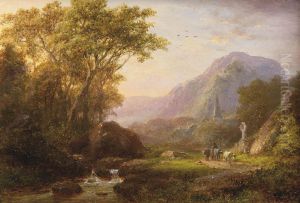
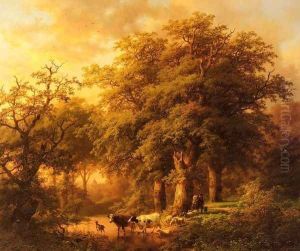
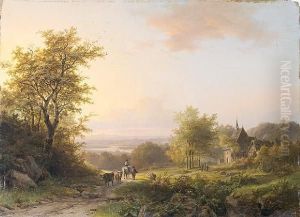
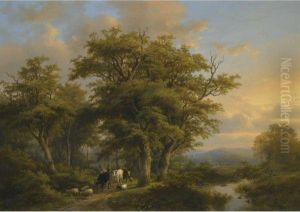
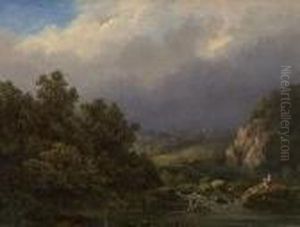
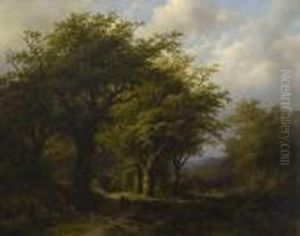
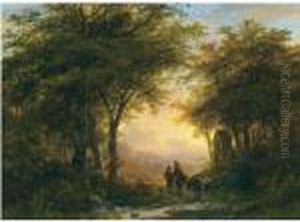
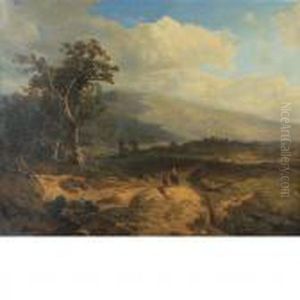
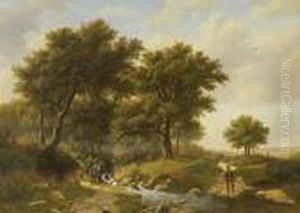
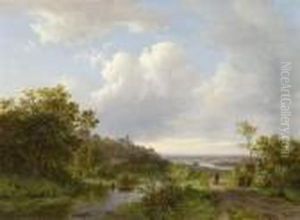
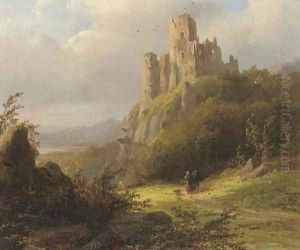
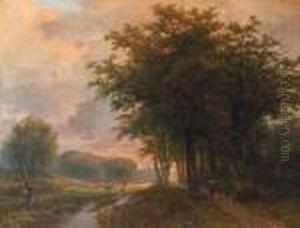
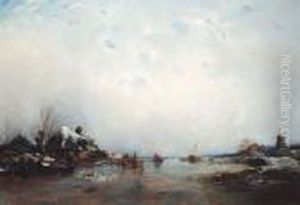
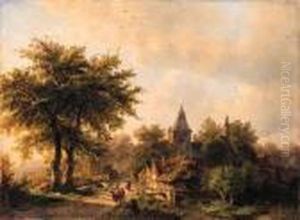
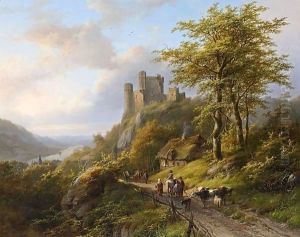
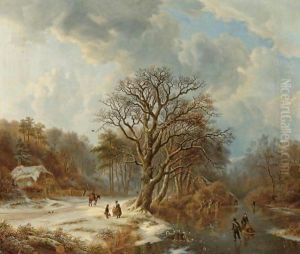
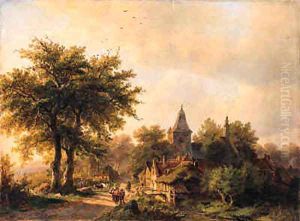
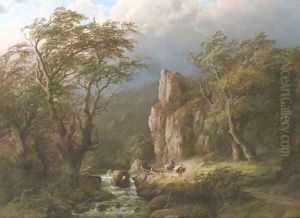
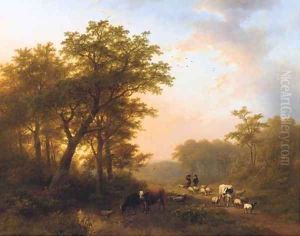
![[paysage Avec Vaches, Moutons Et
Village Dans Le Lointain.] Huile Sur Toile, Signee En Bas A Droite](https://www.niceartgallery.com/imgs/1412010/s/johann-bernard-klombeck-paysage-avec-vaches-moutons-et-village-dans-le-lointain-huile-sur-toile-signee-en-bas-a-droite-67b5419.jpg)
